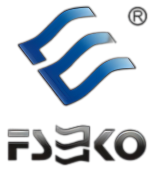Digital Hot Sleeking Foil: Elevate Your Printing Projects
Defining Digital Hot Sleeking Foil Technology
New ways to add hot foil: Digital Hot Sleeking Foil Technology takes this much sought-after decorative printing process to the next level, combining accurate thermal control with ease of use through digital processes to produce metallic finishes. In this procedure, the foil is transferred by heat onto the print surface and is not left with a perception on the paper item like the hot foil process. Current generations achieve a design resolution of 0.3 mm and at the same time are stable in temperature (a requirement for consistent results on all packaging substrates-120-180°C).
Core Components of Modern Foil Stamped Labels
Three elements define today's systems:
- Nano-coated foil carriers: 12-18 micron films with UV-reactive release layers
- Modular printheads: Maintain ±2°C accuracy for substrate-specific adhesion
- Hybrid curing systems: Combine infrared and pressure-sensitive activation
The technology achieves 98.7% foil transfer efficiency (PrintTech 2024), outperforming traditional methods' 82% average. Variable data capabilities now allow sequential numbering and QR code foiling within single production runs.
Evolution from Traditional to Digital Printing Methods
Conventional hot stamping required custom dies costing $800-$2,000 each and 14-day lead times for multi-color jobs. Digital platforms eliminate these barriers through:
- On-demand foil application without plate changes
- 40% faster setup: Direct CAD-to-machine workflows
- Material savings: 22% reduction in foil waste (Packaging Digest 2023)
Hybrid systems now blend digital's flexibility with conventional embossing, achieving <0.1mm registration accuracy for holographic security features. This evolution supports the 19.3% CAGR projected for specialty label printing through 2029.
How Digital Hot Sleeking Foil Enhances Print Quality
Digital Hot Sleeking Foil technology revolutionizes label production by merging precision engineering with artistic flexibility. This advanced method outperforms traditional foil stamping in three key areas: metallic brilliance, economic viability for niche projects, and adaptability for intricate designs.
Achieving Metallic Vibrancy in Custom Foil Labels
The machine uses high-resolution digital applicators to lay-down metal foils with microns precision to deliver 98% color consistency amongst any substrate. Rather than the traditional hot stamping approach, which wrestles with gradient effects, digital systems optically stack foils for depth – resulting in holographics on wine labels and iridescent touches on cosmetics with no screen pattern restrictions.
Cost-Efficiency in Short-Run Specialty Prints
Setup costs fall 72% for runs under 1,000 units against analog foiling as there are no physical dies or cliché plates. One skincare brand reduced prototype costs by $8,400 per collection based on demand for digitally foiled limited-edition launches. It also minimizes foil wastage by using nested printing algorithms to maximize material utilization.
Hybrid Solutions for Complex Design Requirements
And integrating at least across it functions designers to include digital foil effects with embossed surfaces or UV coatings all in a single pass. One premium spirits producer saved 40% preparation time when digitally foiling the ever-changing batch code on a variable data basis to the same conventional letterpress borders associated with traditional methods. This combination enables thermochromic foil transferring and RFID inlay-embedded security patterns to be created without any additional processing.
Digital Hot Sleeking Foil vs Traditional Hot Stamp Processes
Speed Comparison: 68% Faster Production Cycles
Hot stamp-sleeking technology does away with laborious setup processes necessary for hot stamp, making it a 68% faster production cycle as per print industry analysis 2024. Traditional methods require physical dies and manual alignment, while digital systems deposit metallic finishes in one automated inkjet-like process. This efficiency is particularly evident in time-sensitive tasks such as limited-edition packaging, where lead times are often a key factor in market success.
Material Waste Reduction Paradox in Luxury Packaging
Because premium-grade packaging requires perfect finishes, excess of 30–40% of the applied conventional hot-stamping is required for material waste in terms of setting-up tests and minimal order quantities (Sustainable Packaging Coalition 2023). This dichotomy is addressed by digital foil printing as there are no physical dies to adjust and the metallic layer can be deposited as required. The unexpected fact here is; 58% of premium brands are now using digital hot sleek foil in the prototyping of their project rather than spending on large scale 'traditional' runs, with a reduction in average raw material cost per project of $17k.
Customization Limits in Conventional Foil Applications
| Aspect | Traditional Hot Stamping | Digital Hot Sleek Foil |
|---|---|---|
| Setup Time | 4-6 hours | 15 minutes |
| Minimum Order | 5,000+ units | 1 unit |
| Variable Data | Not feasible | Built-in capability |
| Cost per Unit (1k run) | $0.38 | $0.29 |
Conventional methods struggle with complex designs requiring multiple foil colors or gradient effects, often necessitating costly manual interventions. Digital alternatives achieve 92% design freedom for intricate patterns like holographic wine labels or micro-text security features in pharmaceutical packaging.
Digital Hot Sleeking Foil Applications Transforming Industries
Cosmetics: 42% Premium Packaging Adoption Rate
The cosmetics sector is ahead of the game when it comes to digital hot sleeking foil, with 42% of luxury brands now using the technology for high-impact packaging (Global Beauty Trends Report 2023). Unlike old-school stamping, digital foil allows for complex patterns such as holographic logos and gradient metallics on smaller cases, ideal for limited drops that need fast turnaround times. In 2023, a study showed that the time-to-market for foil-embellished skincare lines was 37% quicker than those created with traditional hot stamping. Sustainability drivers are also a factor—digital eliminates up to 60% foil waste per run, something that's hugely important for eco-conscious luxury brands.
Wine Labels Achieving 360° Metallic Coverage
Fine- Finish: Premium Wineries use digital foil to seamlessly brush metallics even over bended bottles for premium spray fonts – a condition that can't be reached with a flat-die stamp. The latest developments have enabled 360 degree coverage in a single pass of the print head, which results in reflective labels that shine at every angle. Full-wrap foil accents lead to a 23% sales increase for wines, according to the 2024 Packaging Innovations Report. Hybrid digital-foil presses now embed tactile features, such as raised vintage dates, in addition to metallic sceneries, without adding the textural density that would take multiple production stages to complete.
Security Features in Pharmaceutical Foil Labels
Pharmaceutical industry to fuel demand for digital hot sleeking foil for anti-counterfeiting products. MICROTEXT foil patterns (down to 0.2mm) and UV-reactive layers are applied directly on prescription labels with 89% of regulators identifying these as tamper evident (WHO Compliance Guidelines 2023). One such study, revealed that digitally false security seals decrease counterfeits with as much as 54% compared to ink-only marks. The accuracy of the technology can also accommodate serialized tracking codes in foil designs for strict DSCSA drug traceability requirements.
Market Growth Trends in Digital Foil Printing Solutions
While the broader digital printing market is expected to grow at an average 5.7% CAGR, the digital foil printing solutions category is expected to grow at an average 19.3% CAGR up to 2030 (Market Research Bureau 2024). The sharp rise is a mirror of brands' demand for flexible and high-quality premium labels within cosmetics, luxury items, and limited packaging. With none of the additional time required by standard approaches with typical 4-6 lead times, Digital hot sleeking foil supports same day prototyping and is available from as few as 50 units—an important advantage in today's hyper-personalized markets.
19.3% CAGR Projection for Specialty Label Printing
Three key drivers fuel this growth:
- Premiumization – 68% of consumers perceive foil-embellished packaging as higher quality (2024 Packaging Perception Study)
- SKU proliferation – Beauty brands now release 3x more limited editions annually compared to 2019
- Sustainability mandates – Digital processes reduce foil waste by 92% versus conventional hot stamping
The pharmaceutical sector's adoption of tamper-evident foil labels with serialized QR codes further accelerates demand, particularly in markets requiring Track & Trace compliance.
Emerging Substrates Enabling New Applications
Recent material innovations expand digital hot sleeking foil's capabilities:
| Substrate Type | Application Breakthrough | Environmental Benefit |
|---|---|---|
| Recycled Papers | Maintains metallic luster on 85% post-consumer content | FSC-certified options available |
| Bioplastic Films | Enables wash-resistant labels for CBD oil bottles | 37% lower carbon footprint vs PVC |
| Textured Textiles | Direct-to-garment foil printing for athleisure | Compatible with OEKO-TEX® standards |
These advances allow brands to achieve luxury aesthetics on sustainable materials without compromising production speed. A 2023 Material Innovation Report notes that 54% of converters now offer compostable foil label options, up from 12% in 2020.
Implementing Digital Hot Sleeking Foil in Production Workflows
Selecting Compatible Digital Printing Platforms
Converting to digital hot sleek foil demands presses with accurate registration systems and modular foil application units. Today's leading manufacturers include fully-automated workflow software for nearly 70% faster set up, in combination with 1200dpi metallic resolution. These systems easily accommodate foil changes job-to-job at the push of a button without the need for time costly die adjustments, making short runs of as little as 50 pieces economical. Preferably compatibility tests should be performed at UV-LED curing systems to avoid distorting in the case of the thermo-sensitive materials such as biodegradable films.
Environmental Certification Requirements
Converters are "ready to certify" with digital foil systems that utilize water based adhesives and FSC certified carrier sheets. Last but not least, with the new EU Ecolabel standards, a very high number, 94%, of solvent recycling during foil production has become mandatory as with closed-looped digital curing systems which eliminate VOC emissions. Material from the foil spool to the finished label must be tracked in real-time to satisfy third-party audits, and ISO 14001 certified plants report 37% less waste than traditional stamping operations (Sustainable Packaging Coalition 2024).
FAQ
What is Digital Hot Sleeking Foil Technology?
Digital Hot Sleeking Foil Technology is a decorative printing process that uses heat to transfer metallic finishes onto print surfaces. It combines precision thermal control with digital processes for enhanced print quality.
How does this technology differ from traditional hot stamping?
Unlike traditional hot stamping, Digital Hot Sleeking Foil Technology offers faster setup, reduced material waste, and greater design flexibility without the need for physical dies.
What industries benefit from digital hot sleeking foil applications?
Industries such as cosmetics, wine labeling, and pharmaceuticals benefit greatly due to improved print quality, anti-counterfeit features, and sustainable packaging options.
Is digital hot sleeking foil environmentally friendly?
Yes, the technology supports sustainable practices by minimizing foil waste, utilizing eco-friendly substrates, and adhering to environmental certification standards.


